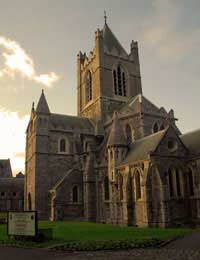Marriage Records: Scotland, Ireland, Channel Isles

Not everyone hails from England or Wales, of course, and even for those living there, their ancestors might well have been born and married elsewhere. Scotland, the Channel Isles and the Isle of Man all operated relatively independently, while Ireland can pose its own problems (even when it was part of the United Kingdom, from 1800 to the early 1920s).
Scotland
In many ways, Scotland is an ideal place for a genealogist to research, In many cases records are more complete than south of the border, and they're all in one place, at the General Register Office in Edinburgh. A real bonus is that they're all available online at Scotland's People .Whilst official registration in England and Wales began in 1837, it didn't arrive in Scotland until 1855. However, those certificates add a couple of pieces of information to bring joy to a genealogist's face - the names and maiden surnames of the mothers of bride and groom (there are also questions asking whether the parents of the bride and groom are deceased). In the early years of registration there were also some other pieces of information included:
- If a widow or widower, whether this is the second or third marriage (used in 1855 only).
- The number of children by former marriages, both living and dead (1855 only).
- The relationship of the parties, if they are related (1855-60).
Channel Isles and Isle of Man
It might come as a surprise, but neither the Channel Isles (Jersey, Guernsey, Alderney and Sark) nor the Isle of Man has ever been part of the U.K. as far as civil registration is concerned. They have their own archives, register offices and libraries with record of marriages, birth and deaths (although their census returns are included with those of England and Wales. The Isle of Man records are in Douglas and date back to 1878. They began in 1860 in Guernsey, and two years later in Jersey.Ireland
The biggest problem with finding Irish records is that so many simply haven't survived. A Dublin fire in 1922 destroyed many records, including around half of the Church of Ireland's parish registers, making for a broken chain at best.The information on an Irish marriage certificate is largely identical to its English counterpart, although full registration didn't begin there until 1864. However, registration of non-Catholic marriages actually started in1845. A Marriage certificate pre-1957 consists of place and date of marriage, both spouses' name, age, marital condition, occupation and pre-marriage address and their fathers' names and occupations. Marriage certificates after 1957 consist of the date and place of marriage, spouses name, age, marital state, occupation and pre-marriage address, their parents' names and the spouses' intended place of residence.
Records are held in the General Register Office for Ireland in Dublin. Unfortunately, they're not available online.
From 1922 (when Ireland was officially divided), Northern Irish records are held by the General Records Office (Northern Ireland) in Belfast, and registers of marriage from 1922 are on computerised indexes there.
Marriage Overseas
If the people you seek were British citizens - or one was- and married overseas, then the marriage might have been registered with the British Consul or High Commission in the country concerned. It's worth checking the Miscellaneous Overseas Registers in the National Archives. For India, try the British Library in London, which has a large collection of material.- Were Fleet Marriages Taken as Legal?
- Handfasting and Marriage
- The Problems With Common Law Marriage
- New Zealand Marriage Records
- Genealogy Searches and Pre-1538 Marriage Records
- Genealogy Source For Non-Anglican Marriages
- Genealogy Sources For Non-Anglican Ancestors
- How to Use Church Marriage Records to Trace Your Ancestors
- Marriage Certificate Problems
- Using Marriage Certificates for Genealogy Research


Re: Using Criminal Records For Family History Research
Hi all i wanted to find out about my dad's past and nobody seems to know much about it or what he did.…
Re: Maiden Names in Genealogy
Looking for my fathers mother maiden name
Re: Genealogy and a Criminal Past
I am trying to find out about my father crime in 1992 or 1993 my father as pass away 1998 and I would like to find out why he got…
Re: Using Criminal Records For Family History Research
I am trying to find my biological father's police criminal record as I was abused as a child but have…
Re: Cremation Records and Tracing Your Family History
I am trying to find out where has my friends aunt Adelinda Diaz McMullen was cremated and who was her…
Re: Cremation Records and Tracing Your Family History
CAN SOMEONE PLEASE HELP ME WITH TRYING TO FIND OUT WHERE MY FATHER WAS CREMATED/BURIED IN KENT UK. I…
Re: What If You Have Asian Roots?
Ancestor Edward Albert Wells was born in Trichinopoly on 8 May 1833 to his father George Wells of the 54th Regiment at Foot and…
Re: How to Use Church Marriage Records to Trace Your Ancestors
It is still legal for first cousins to marry.
Re: Cremation Records and Tracing Your Family History
My sister finance was cremation and she stayed up by his bedside at Augusta university for days on out…
Re: Cremation Records and Tracing Your Family History
I am trying to find out where my partners mother was cremated. Patricia Florence Bennett. Cremated…